* Photo: Anadolu Agency (AA)
Click to read the article in Turkish (1) (2)
Amid a recent surge in mucilage, or the sea snot, in the Sea of Marmara in northwestern Turkey, Minister of Environment and Urbanization Murat Kurum examined the sea cleaning efforts yesterday (June 6).
Before attending the closed-door Marmara Sea Action Plan Coordination meeting in the northwestern Kocaeli province, the Minister examined the research efforts on how to deal with the overgrowth of microscopic algae that has formed a mucus-like slimy layer in the sea.
While Minister Murat Kurum said that "they would not abandon the Sea of Marmara to its fate", later in the day, the Ministry unveiled a 22-point action plan to clear the sea from the sea snot.
As reported by the state-run Anadolu Agency (AA), Minister Kurum met with senior officials from the provinces of the Marmara Sea coast. Addressing the reporters after this meeting, he said: "As part of the emergency response, as of June 8, efforts will be launched to completely clean the mucilage in the Marmara Sea with scientific-based methods on a 24/7 basis."
"On Tuesday, June 8, we will conduct the largest sea-cleaning in Turkey with a consciousness of mobilization together with all our institutions, municipalities, nature lovers, athletes, artists and citizens."
A Coordination Board to be formed
Unveiling the action plan, Minister Kurum announced that the government would form a "coordination board" that would include the Ministry of Environment and Urbanization as well as universities, chambers of industry, non-governmental organizations and other relevant institutions and organizations to reduce pollution and to monitor the Marmara region.
"A scientific and technical council will be established under the Marmara Municipalities Union," he said, adding that the board would be formed as of next week. He also revealed that an integrated strategic plan for the Sea of Marmara would be prepared within three months.
"We will launch efforts to designate the entire Sea of Marmara as a protected area," said Kurum, adding that the 4,382 square mile body of water would be brought under protection by the end of the year.
Surface cleaning boats have already started cleaning in almost all points of the sea, he underlined further in his statement.
Wastewater treatment plants
As part of the efforts to clean up the mucilage in the Sea of Marmara, existing wastewater treatment plants in the region will be converted into advanced biological treatment facilities, Kurum said.
Noting that officials would also work to ensure that wastewater is not discharged into the Marmara Sea without first undergoing advanced biological treatment, he noted that 53 percent of wastewater in the Marmara region goes through preliminary treatment, while 42 percent is subject to advanced biological treatment and 5 percent to biological treatment.
"According to our scientists, if we reduce the nitrogen by 40 percent, we will solve the root of this problem. In the next 3 years, all our provinces in the Marmara region will complete their work on converting wastewater treatment plants," he said, adding that wastewater discharge standards and regulations would be updated and implemented within 3 months.
Wastewater reuse, discharge prevention
According to the statement of Minister of Environment Kurum, the plan will also entail supporting the expanded reuse of treated wastewater and the application of clean production techniques.
The aim is to increase the rate of treated and reused wastewater in the country, which is currently 3.2 percent, to 5 percent by 2023 and to 15 percent by the year 2030, he explained further.
"Arrangements will be made within three months to prevent the discharge of wastewater from ships into the Marmara Sea. Currently, they already are not allowed to dump wastewater into the sea without treatment," Murat Kurum said, adding that vessels entering the sea would be made to give up their refuse to waste reception boats or facilities.
"In this context, together with our local administrations, we will strictly monitor ships. We will increase our inspections."
Digital twin of Marmara Sea
Kurum also emphasized that authorities would make clean production techniques more widespread in shipyards, preventing possible marine pollution with more environmentally friendly practices.
The number of facilities monitoring wastewater treatment plants along the Marmara coast will be increased to 150 from the current 91, with 24/7 supervision to be expanded using remote sensing, satellite and early warning systems, uncrewed aerial vehicles and radar systems, he said.
The ministry will also develop a "digital twin" of the Sea of Marmara that will involve a large amount of data from meteorology to pollution loads via 3D modeling, added Kurum further in his statement.
"We will view details on all the pollution sources and densities in the Marmara region. We will monitor changes in these regions in real time. No matter where, we'll intervene in pollution instantly... We will also have attained the capacity for early intervention in the event of potential negative scenarios in the Sea of Marmara in the future, not just today."
Zero-waste
Noting that 90 percent of solid marine waste and garbage comes from the land, Kurum said that in a year, all of Turkey's provinces and districts on the Marmara coast would adopt zero-waste practices.
"We will collect our waste on the land, decompose it, and contribute to our economy and employment," he said.
He added that by also making good and organic farming practices, as well as pressure and drip irrigation systems, more prevalent, "we will reduce the amount of water used in irrigation and prevent pollution from reaching the Sea of Marmara via streams."
Organic cleaning products, ghost nets
During his speech, the Environment Minister also underlined the importance of preventing pollution from reaching the sea by creating artificial wetlands and buffer zones in basins linked to the Marmara Sea.
"We will make technological transformations to reduce wastewater mandatory," he said, adding that the government, starting with municipalities and institutions, will gradually reduce the use of all harmful substances in urban sanitation that damage human health and flow into Marmara.
"First, we will identify and start using organic cleaning products in our institutions. As a ministry, we will provide the necessary financial support."
"All ghost nets in our Marmara Sea will be cleaned by our Agriculture and Forestry Ministry within a year," added Minister Murat Kurum, promising to ensure that fishing activities will be conducted in an ecosystem-based fashion and that protected areas will be developed.
What is mucilage, and why does it emerge?The mucilage, defined by fishermen as "nez", foam or snot, is the intense proliferation and color spiral of Gonyaulax fragilis, a type of phytoplankton from one-celled plant creatures. Although mucilage, which shows itself more in calmer seas, is natural, it can damage the ecosystem when it grows excessively. The Turkish Marine Research Foundation (TÜDAV) states that this yellow, white, colored mud-like substance has been seen and spread frequently above and below the water in the Black Sea, Marmara, and Aegean Seas in the last two years. The Marmara Environmental Monitoring Project (MAREM), which has been drawing attention to the mucilage problem in the Sea of Marmara since 2007, points out that such anomalies are an indicator of the level of pollution in the sea. Project manager Levent Artüz emphasizes that mucilage, which has a very sticky and contagious structure, can bring the end of life in the sea. Stating that the vast majority of fish eggs are found on the surface of the sea and the eggs on the surface lose their chance of survival by being trapped in the mucilage, Artüz says the same is true for the larvae. According to the information Artüz conveyed in 1+1 Forum, the mucilage collapses over time on creatures that cannot move such as mussels, oysters, and tunicates and covers the sea meadows and cuts off their contact with light. On the other hand, experts explain the causes of mucilage as the loss of oxygen in the sea due to filling the coasts and wastes and the rise in temperatures in the Mediterranean Basin due to global climate change. What about the Sea of Marmara?Looking at the sea surface temperature data, the temperature of the Sea of Marmara this year is 2.5 degrees above the average of 40 years, in other words, there is an anomaly of 2.5 degrees. Around 25 million people live around the Sea of Marmara. Nearly half of Turkey's industry is located around it as well. In other words, all domestic, industrial, and agricultural wastes go directly or indirectly to the Sea of Marmara. What should be done?Scientists say that the most important thing to do against mucilage is not to dump untreated waste into Marmara. Another suggestion is to start work as soon as possible to develop a new waste management policy that also takes into account climate change. |
(TP/SD)




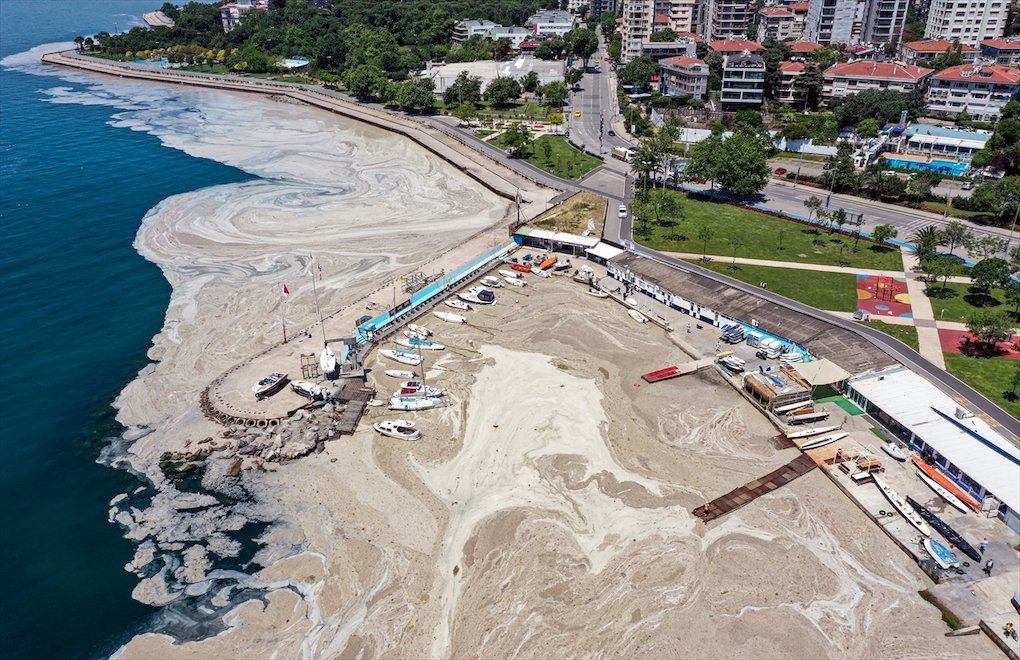
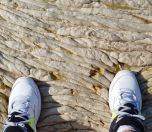
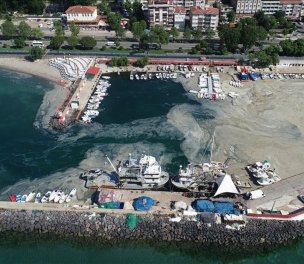
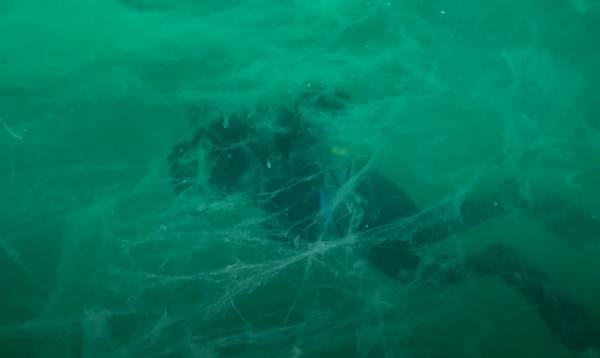
sa.jpg)
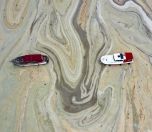
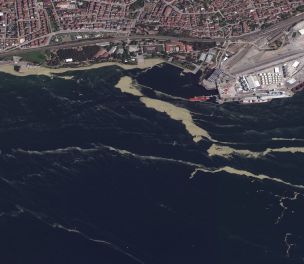
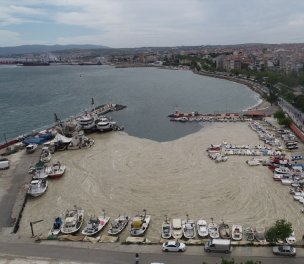
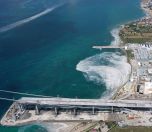

as.jpg)